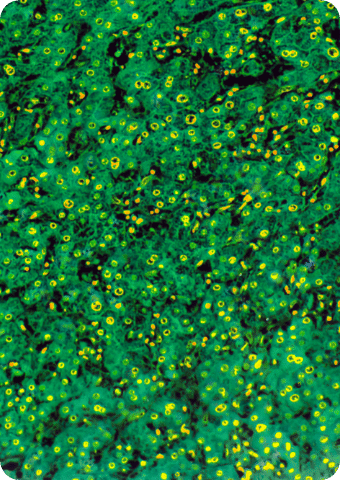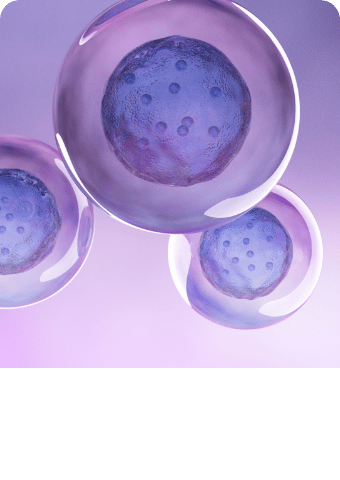
What are Branched Amphipathic Peptide Capsules (BAPC®️)
BAPC®️ are an entirely new class of nanocarrier engineered from the sequence of a naturally occurring protein. They are a superior delivery vehicle for proteins, peptides and nucleic acids since they overcome many of the poor absorption issues that plague current nanodelivery products. BAPC®️ have been demonstrated to substantially improve the efficacy and delivery of novel vaccines, cancer therapies, diagnostics and biopesticides. The surface of BAPC allows for attachment of targeting moieties, ensuring active ingredients are delivered precisely to the cells where they are needed.
BAPC®️ Advantages

Water soluble
Non-immunogenic

Extremely stable
Can withstand temperatures up to 100° C

Minimally toxic to cells

Biodegradable
A nanocarrier that overcomes the limitations of existing products
| PRODUCT | COMPOUND | CYTOTOXIC | IMMUNE RESPONSE | STABILITY | BIODEGRADABLE | COMPANY |
| BAPtofect®️-25 | BAPC®️ | Extremely Low | No | High | Yes | Phoreus |
| Lipofectamine 2000 | Lipid | Moderate | Yes | Low | Yes | Thermo Fisher |
| X-tremeGene | Polymer | Low | No | High | Low | Roche |
| HiPerFect | Lipid | Moderate | Yes | Low | Yes | Quigen |
| Trans-Hi | Polymer | Low | No | High | No | FormuMax |
| TransITxX2 | Polymer | Low | No | High | No | Mirus Bio |
How does it Work? Here are the steps for BAPC®️ Payload Delivery:

Step 1
The positively charged surface of BAPC®️ meets a cell membrane.

Step 2
The cell membrane envelopes BAPC®️ and their cargo, forming an early endosome.

Step 3
Unable to breakdown the BAPC®️, the late endosome wall breaks down releasing the contents in the perinuclear cytosol.

Step 4
The new pH results in a reduction of electrostatic attraction, and the payload is released.

Step 5
Nucleic acids are released from the BAPC®️ into the cytosol.
BAPC®️ are rapidly taken up by all cells tested to-date, including a variety of epithelial cells, macrophage and adipocytes. They enter cells through the endocytic pathway and escape the late endosomes, finally accumulating in the perinuclear space. BAPC®️ have been shown to effectively deliver nucleic acids (DNA and RNA), which are released in a time-dependent manner. They show negligible cytotoxicity when given at doses that exceed clinically relevant ones in cultured cells, fungi, insects, nematodes, plants and mice. Working with BAPC®️ makes it simple to move from in vitro research to in vivo applications.



